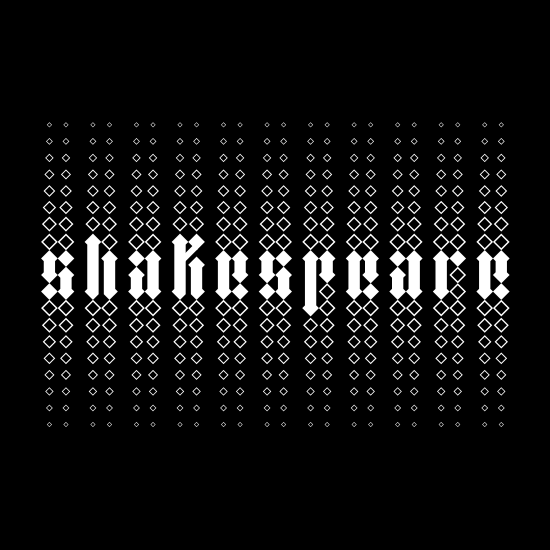Sure, Michael Jackson and his brothers were pretty confident when they sang ABC but they weren’t talking about writing text analysis essays. Or were they?
A common misconception is that an English essay just needs to reflect the topic back in some way. Like a ‘paint by numbers’ activity in the diagram above, this approach involves identifying different elements in the topic and then writing a paragraph on each, slapping a generalised introduction and an even more generalised conclusion on either end. Bingo! You have a very run-of-the mill essay. It may not present a coherent, insightful interpretation but it shows the student has read the topic and found evidence in the text which matches it. This approach will merely illustrate the essay topic, much like the painting above is a mere illustration of the numbers diagram, rather than someone’s original, independent interpretation of a house in the snow. An essay like this might only ever get a C+ or B grade at best. The content won’t be wrong but the thinking won’t be very right.
This painting is a more nuanced interpretation of a house in the snow. You know you want a more nuanced interpretation of the text you are studying so let us see how this might play out when we start to think about Macbeth.
A possible essay topic might read:
”This dead butcher and his fiend like queen’. To what extent do you think this is an accurate assessment of Macbeth and Lady Macbeth?’
A ‘paint-by-numbers’ approach would be to structure an essay question in this way:
Main contention: Yes, Macbeth is definitely a ‘butcher’ and Lady Macbeth is ‘fiend-like’.
P1 Macbeth kills Duncan = butcher
P2 Macbeth kills Banquo and Macduff’s family = butcher
P3 Lady Macbeth calls on evil spirits = fiend-like
Thinking=meh.
Notice how the main contention offers a very simplistic yes/no response to the question. The main contention should be a student’s ULTIMATE ANSWER. Notice how the paragraphs merely seek to illustrate the topic’s key elements. The supporting arguments need to provide an interpretation of the text.
A more sophisticated essay plan responding to the same essay question might look like this:
Main contention: Although Macbeth has a conscience when hesitates to kill Duncan and experiences guilt after murdering Duncan and Banquo, he is most definitely a butcher by the play’s end while Lady Macbeth presents as a woman capable of being fiend-like when she is Macbeth’s partner in crime however her demise is pitiful. She dies mad and guilt-ridden and Malcolm’s assessment of her as having evil power at the play’s end does not ring true.
P1 Macbeth resists the idea of killing Duncan and is troubled by his actions, both in killing the King and later Banquo, which suggests his conscience prevents him from merely ‘butchering’ those who stand in his way.
P2. Macbeth does become a butcher by the play’s end because he becomes impervious to his conscience and doggedly pursues he course of action to the end which includes ordering the killing of Macduff’s family in a brutal, bloody manner.
P3. Lady Macbeth demonstrates her fiend-like capacity when she calls on the evil sprits to make her capable of goading Macbeth to kill Duncan and when she is able to present as unperturbed by the crime to the court. It is when we see her madness emerge later that we understand that her freedom from guilt was only temporary and she dies more wraith-like – powerless.
Notice how all the key elements of the topic have been interpreted for the benefit of this essay – this student is officially ‘doing more with the topic’ which is teacherspeak for THINKING. This main contention is an ULTIMATE ANSWER. It sets the terms for the essay – the interpretation.
The ‘to what extent’ part of the question is answered in the main contention by considering where or when in the text it might be true or untrue and qualifying their response. In this example the main contention is basically this: it is true for Macbeth (though not at the play’s beginning) and it is not true for Lady Macbeth (though true at the play’s beginning).
The topic sentences all go part of the way to answering the topic. Each stage demonstrates knowledge and understanding and goes beyond the deceptively simplistic essay topic.
This second essay plan shows that the student has weighed up all their ideas first before settling on their interpretation.
Remember that these are only the bones of the argument. The student would have to flesh these out with quotations and analysis – explaining the significance of the language of the quotation in the light of their interpretation of the text.
See? Not as easy as ABC, 123, do re mi…but much more meaty (if you will allow me a butcher’s expression).



